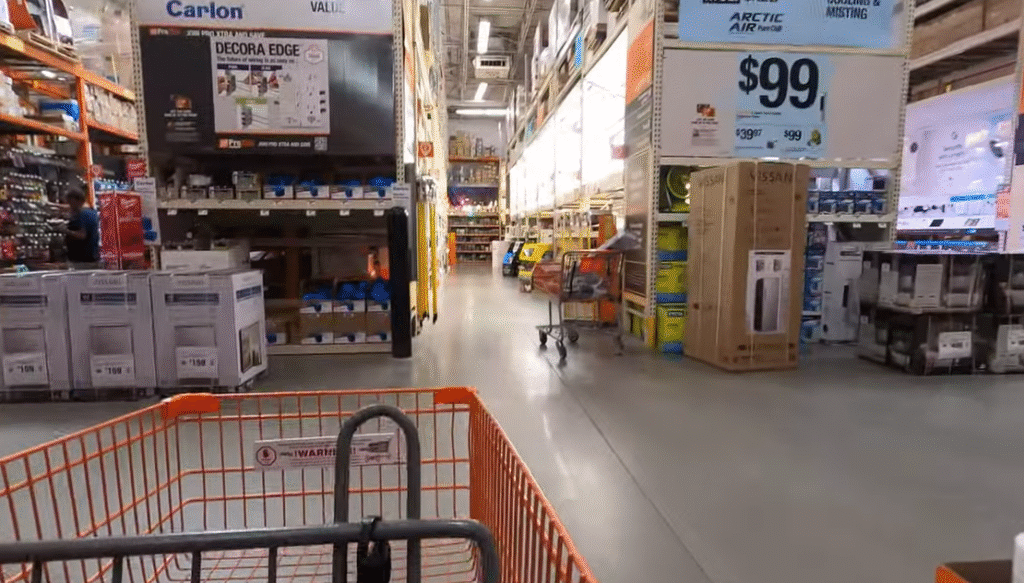The Home Depot Damage Protection Class Action has swiftly evolved into a glaringly symbolic conflict between customer expectations and company policy. According to the lawsuit, which was filed by plaintiff Randall Simmons, the business automatically charges clients a “damage protection” fee when they rent tools, even if they choose not to accept it. Simmons contends that this practice violates the terms of the contract and inflates Home Depot’s revenue by tens of millions of dollars every year, which erodes consumer trust and causes annoyance.
The 15% damage protection fee that renters frequently pay without realizing it is at the core of this problem. The lawsuit argues that although the fee is marketed as protection against expensive repairs, it only covers normal wear and tear, giving customers little real security in the event that actual damage occurs. When accidents occur, the coverage has proven remarkably ineffective for many renters, causing confusion and resentment.
The plaintiff’s account is especially instructive. Simmons chose not to accept the fee, but when he rented tools, he discovered it had been added by default. Later, a store manager acknowledged that although it could be manually removed, the system is set up to apply it automatically. This practice exemplifies how digital defaults can subtly override consumer choice, as the complaint makes abundantly evident. The complaints regarding streaming services that sign up users for auto-renewals without their consent are remarkably similar to this one.
Home Depot Damage Protection Class Action
Key Information Table
| Detail | Information |
|---|---|
| Case | Home Depot Damage Protection Class Action |
| Plaintiff | Randall Simmons (Representative Plaintiff) |
| Defendant | Home Depot USA, Inc. |
| Allegations | Forced “optional” damage protection fees, misleading coverage, breach of contract |
| Court | U.S. District Court for the Northern District of Georgia |
| Settlement/Relief Sought | Jury trial, compensatory damages, attorneys’ fees, declaratory and injunctive relief |
| Policy at Issue | Tool rental damage protection, charged as 15% of rental cost |
| Reference | Class Action Overview: https://topclassactions.com/lawsuit-news/home-depot-class-action |

It has a significant financial impact. According to analysts, these fees bring in tens of millions of dollars annually, demonstrating how minor fees can grow into incredibly powerful profit streams when multiplied by the number of transactions. However, those minor fees quickly mount up for individual clients, especially for contractors or small enterprises that depend significantly on tool rentals.
Home Depot has filed a motion to dismiss, claiming its actions are in accordance with current agreements, and has not acknowledged any wrongdoing. However, the accusations are significant because they directly relate to broader societal worries about so-called “junk fees.” President Biden and other public figures have advocated for increased transparency in a variety of sectors in recent months, from ticketing to airlines. The class action highlights society’s demand for incredibly transparent pricing by bringing Home Depot’s practices into line with those discussions, making it more than just a disagreement over rental fees.
Consumer experiences increase the cultural resonance. After learning about exclusions that rendered the coverage incredibly ineffective in reality, many customers mistakenly believed that damage protection meant peace of mind against broken blades or damaged cords. Stories of rejected claims abound in online forums, which contribute to the idea that the fee is expensive for customers but surprisingly cheap for the business. This disparity demonstrates why this lawsuit has such a powerful resonance.
In a larger sense, Home Depot has experienced lawsuits before. The business received recognition for its incredibly successful response to a major data breach in Canada years ago, providing free credit monitoring and open communication. That instance demonstrated how timely disclosure can significantly raise a company’s reputation. On the other hand, the current accusations point to less transparent behavior, which makes customers wonder if their trust has been betrayed.
The risks to one’s reputation are substantial. Reliability is the foundation of Home Depot’s brand identity, which positions the company as a very trustworthy partner for both professionals and homeowners. Claims of unstated costs contradict that perception. Lowe’s and other competitors may take advantage of this opportunity to emphasize transparency as a competitive advantage as they push into rental properties with more transparent fee structures.
Investors frequently lag behind public sentiment, but financial markets are still stable as of right now—shares recently increased despite the lawsuit. Reduced rentals or changes in loyalty may result if customer annoyance turns into viral momentum. Business errors can become expensive in a time when harm to one’s reputation spreads much more quickly than it did in earlier decades.
The way society reacts shows that hidden charges are becoming more and more annoying. These fees, which were once written off as minor annoyances, are now being contested in court and in public. Tolerance has drastically decreased as a result of digital receipts and online platforms that make patterns glaringly obvious. The case serves as an example of how once-fragmented collective grievances have gained strength through class action, turning dispersed complaints into potent legal action.
The wider effects of the lawsuit might be revolutionary. Companies in a variety of industries might be compelled to stop using default opt-ins and switch to systems where customers specifically choose extra coverage if the court rules in Simmons’ favor. Customers would especially benefit from that change, which would guarantee that optional services are just that—optional. A decision like this might change how things are done in subscription services, event ticketing, and even car rentals.
In this way, the Home Depot Damage Protection Class Action is more than just a court case; it is a test of corporate accountability in a time when openness is now taken for granted. It poses important queries: Should businesses make money off of defaults instead of consent? Is it reasonable for a policy titled “damage protection” to exclude the majority of actual accidents? Most importantly, can consumers’ trust be restored after they believe they have been misled?

